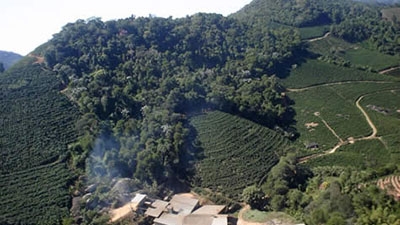Freshwater goes a long way from the rural highlands of Espírito Santo to homes and businesses in Vitória metropolitan area -- which concentrates more than 50% of the southeastern state population.
But over the last years, an increasingly high amount of sediments and pesticides flowed down as well, causing water treatment costs to rise.
“This is an important effect of harmful land-use patterns in the mountain farms,” explains Gunars Platais, an environmental specialist at the World Bank. Fortunately these practices can be changed, at a much lower cost than an upgrade of the water treatment system.
How? By rewarding farmers who engage in environmentally friendly practices, such as:
- Preserving/recovering the Atlantic Forest areas in their lands. Espírito Santo is located within the rainforest, which is one of the world’s hottest biodiversity hotspots. However, due to deforestation, only 11% of forest cover is left in the state -- and most of it is in fragments, which threatens the survival of several species.
- Maintaining forest cover along river edges and keeping livestock away form the watersheds of Jucu and Santa Maria da Vitória. Poorly managed cattle causes not only water contamination by cow dung and urine, it may also accelerate erosion (which increases sediment yield).
- Decreasing the amount of pesticides applied to their crops or investing in organic agriculture.
All of these measures reduce river pollution, but there’s more. “If we manage to curb sediment yield by 0.5%, the state government will be able to save at least BRL1,000,000 (US$ 500,000) in water treatment”, says forest engineer Marcos Sossai.
Sossai and Platais, with other specialists from the World Bank and the government of Espírito Santo, carry out a project that pays ranchers an annual, variable amount – which enables them to invest in sustainable activities.
When land owners join the initiative, technicians measure the area, carry out an environmental assessment, and establish specific goals (and payments) for each of the farmers.
“With the money they can buy seedlings, build fences that keep the livestock from destroying the native trees, things like that,” Sossai explains.

